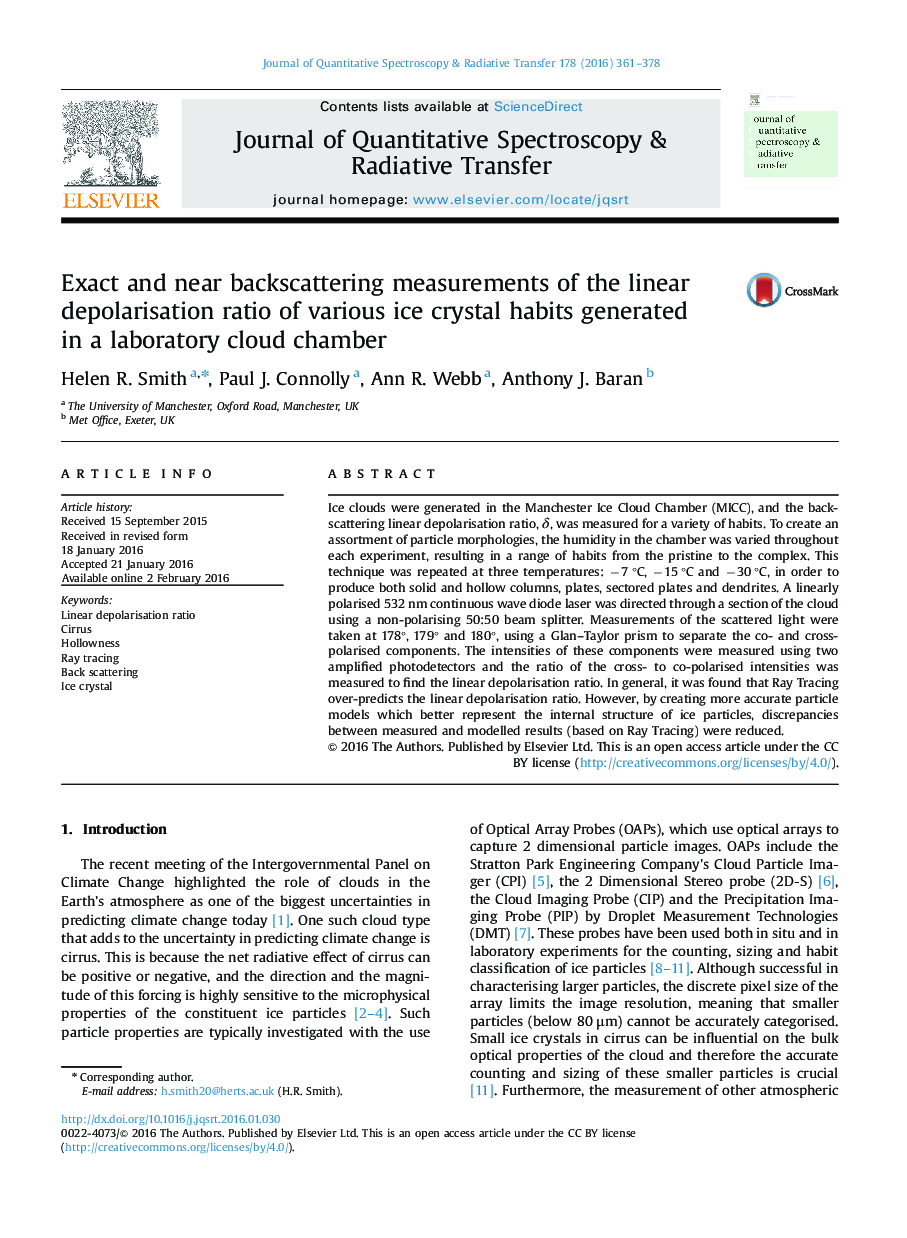| Article ID | Journal | Published Year | Pages | File Type |
|---|---|---|---|---|
| 5427605 | Journal of Quantitative Spectroscopy and Radiative Transfer | 2016 | 18 Pages |
â¢Linear depolarisation ratio was measured for various crystal habits.â¢Measurements were taken at 178°, 179° and 180°.â¢Various crystal properties were modelled and tested in ray tracing.â¢Measured and modelled results are discussed.â¢Modelled results are generally found to overpredict LDR.
Ice clouds were generated in the Manchester Ice Cloud Chamber (MICC), and the backscattering linear depolarisation ratio, δ, was measured for a variety of habits. To create an assortment of particle morphologies, the humidity in the chamber was varied throughout each experiment, resulting in a range of habits from the pristine to the complex. This technique was repeated at three temperatures: â7 °C, â15 °C and â30 °C, in order to produce both solid and hollow columns, plates, sectored plates and dendrites. A linearly polarised 532 nm continuous wave diode laser was directed through a section of the cloud using a non-polarising 50:50 beam splitter. Measurements of the scattered light were taken at 178°, 179° and 180°, using a Glan-Taylor prism to separate the co- and cross-polarised components. The intensities of these components were measured using two amplified photodetectors and the ratio of the cross- to co-polarised intensities was measured to find the linear depolarisation ratio. In general, it was found that Ray Tracing over-predicts the linear depolarisation ratio. However, by creating more accurate particle models which better represent the internal structure of ice particles, discrepancies between measured and modelled results (based on Ray Tracing) were reduced.
